The Rotate 3D function rotates geometry around any axis (user-defined line), with an optional copy, using Dynamic Drawing. Dynamic Drawing allows you to use data entry or sketch handles to define the start and end of the rotation axis and the rotation angle. The benefit of Dynamic Drawing is that both methods can be utilized at any time during creation. You can use the sketch handles to get close to the desired result and then update the Data Entry parameters to get the exact value.
Rotate 3D supports the use of the snap increment when using the sketch handles to set the rotation angle or start and end points of the rotation axis. The snap increment allows you to get precise results when using mouse selection and helps to reduce data entry modifications.
To learn more, view Snap Increment.

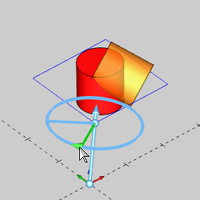

To open Rotate 3D, do one of the following:
The parameters display in the ![]() Data Entry tab of the Data-CAM Tree Manager.
Data Entry tab of the Data-CAM Tree Manager.
The Angle parameter determines the amount of rotation, in degrees, around the defined rotation axis. Dynamic Drawing allows you to set the angle using sketch handles, data entry, or a combination of both. When using sketch handles, the snap increment applies.
TIP: The Rotation Angle sketch handle points in the positive direction of rotation based on the right-hand rule.
Angle - determines the amount of rotation around the selected rotation axis.



Copy - performs the rotation as a copy of the original geometry. This option leaves the original geometry unchanged.
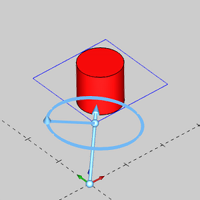
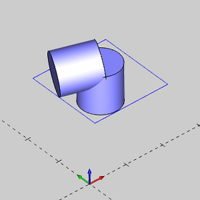
The Start and End parameters determine the rotation axis using two points: start and end. These values can be set using either data entry or sketch handles. When using sketch handles, the snap increment applies.
IMPORTANT: When setting the Start and End values of the rotation axis, the Start and End values can't be the same point (in order to define the rotation axis or line). For example, with Start coordinates of X0 Y0 Z0 and End coordinates of X1 Y0 Z0, you can't change the End X value to zero. You must first update any other value before setting the End X value to zero.
Start
X - determines the X-axis location of the rotation axis start point in reference to the active UCS.
Y - determines the Y-axis location of the rotation axis start point in reference to the active UCS.
Z - determines the Z-axis location of the rotation axis start point in reference to the active UCS.
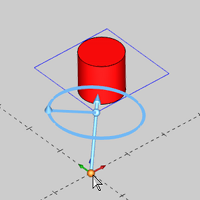
End
X - determines the X-axis location of the rotation axis end point in reference to the active UCS.
Y - determines the Y-axis location of the rotation axis end point in reference to the active UCS.
Z - determines the Z-axis location of the rotation axis end point in reference to the active UCS.

1 Open the function and select the geometry to rotate.
This can be wireframe, solids or both.
TIP: When rotating solids, a Rotate feature is added to the CAD Tree.
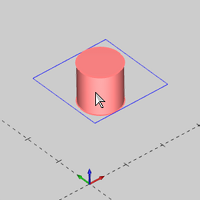

(You can also define all Data Entry parameters before selecting geometry, but it is often beneficial to select the geometry first and create the CAD preview so you can visualize the changes made to the Data Entry parameters.)
2 Confirm (OK) the selection to create the CAD preview and display the rotation axis and rotation angle sketch handles.
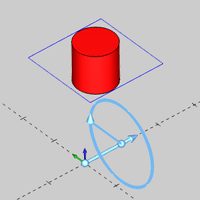
3 Use sketch handles or data entry to modify the start and end of the rotation axis and the rotation angle as needed.
You can modify the snap increment value or turn it off if you are using sketch handles.
In the following images, the rotation axis endpoint is modified using the snap point of a rectangle.
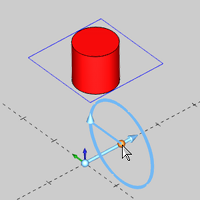
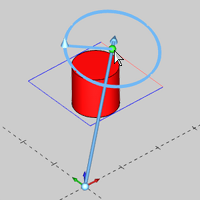

Next, the rotation angle is modified using the rotation handle.
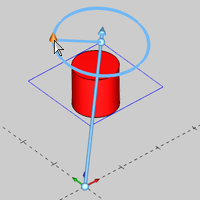

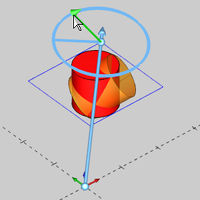
After getting close to the desired result, the rotation angle is updated using data entry. (The final value is typed in the Angle box of the Data Entry Manager.)

4 Click OK to rotate the geometry as shown in the CAD preview. (The geometry is rotated and the CAD preview updates to the new position.)
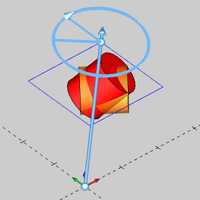
5 To rotate other geometry, click Re/Select and repeat the process.
6 Click Cancel to close the Data Entry Manager.
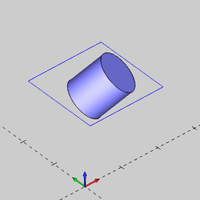
For each solid entity that you rotate, a feature is added to the CAD Tree that retains your results. This allows for editing, suppressing, and more as explained in The CAD Tree.